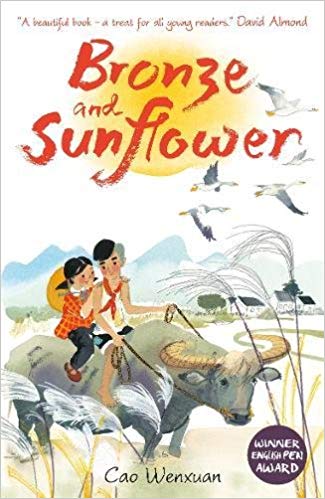Bronze and Sunflower

Book Details
Bronze and Sunflower
Cao Wenxuan, illus. Meilo So, trans. Helen Wang, London: Walker Books, pb. 978 1 4063 4846 0, 2015, £6.99, 400pp.
First published in China 2005.
Novel; 9+ years.
The ensuing crises highlight the precarious reliance of the villagers on the rice harvest and the devastating impact of a swarm of locusts. The figures of the children could be seen as metonymic of the division between the traditional way of life and the impact on it of the new educated class; this is perhaps especially powerful because of Bronze’s muteness. The implicit question about how long their relationship can last, latent throughout the book, comes to the surface at the end.
Opinions may differ as to how successfully Cao Wenxuan resolves it. The translation is fluent, though I did feel that the provision of a map would have facilitated my understanding of the locations. I think that readers would have few reservations in agreeing with David Almond’s comment about the beauty of the book, nor with his assertion at the end that ‘Our children need to be exposed to a world of voices so that the whole world becomes their home.’ The voices in Bronze and Sunflower certainly make the world of rural China present to us in a unique way.
Review by Pat Pinsent
